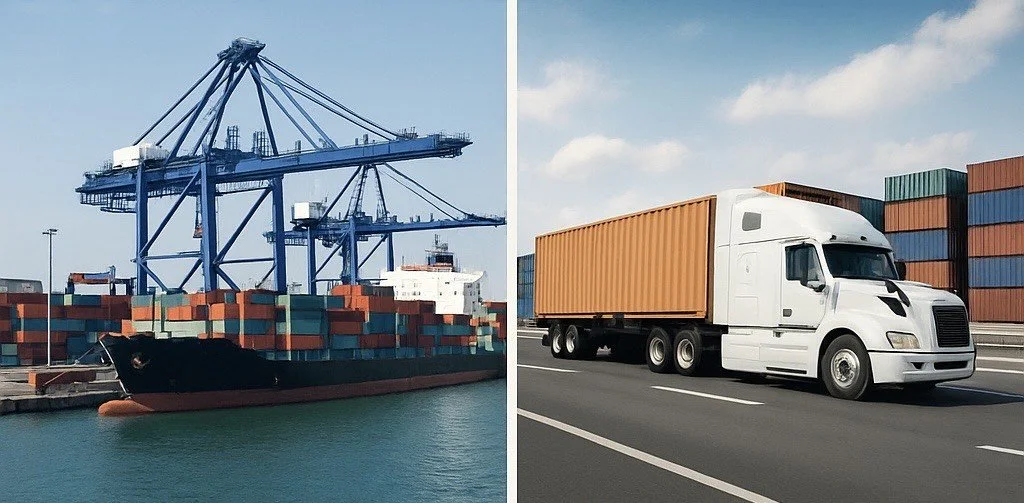U.S. Ports and Trucking Shortages: Preparedness for a Post-U.S.–China Trade Agreement Surge
An In-Depth Analysis of Infrastructure, Labor, and Regulatory Challenges
As the prospect of a renewed U.S.–China trade agreement looms, the potential resurgence in global trade raises a critical concern: Are American ports and trucking networks equipped to handle the resulting surge in freight? With persistent congestion at key gateways, a chronic driver shortage, and increasingly stringent regulatory barriers, the U.S. supply chain remains vulnerable to disruptions reminiscent of 2021. This article evaluates the current state of U.S. logistics infrastructure and labor capacity—leveraging real-world data and industry insights—to assess readiness and identify actionable solutions in a post-trade-deal environment.
1. U.S. Port Readiness: Capacity and Constraints
1.1 Port Congestion and Throughput Trends
Ports have yet to fully recover from the record-breaking congestion of 2021, when more than 100 vessels were anchored off Los Angeles and Long Beach, which collectively handle 40% of U.S. containerized imports (Port of Los Angeles, 2021). While congestion eased somewhat by 2023, East Coast hubs like Savannah experienced 30% year-over-year volume growth, pushing terminal capacity to its limits (AAPA, 2023).
1.2 Infrastructure Modernization Efforts
The Bipartisan Infrastructure Law earmarked $17 billion for port upgrades, emphasizing electrification, channel dredging, and intermodal connectivity. Key projects include:
Port of Los Angeles: $2.3 billion to enhance on-dock rail capacity and deploy zero-emission cargo-handling equipment by 2030.
Port of Houston: A $1.4 billion channel expansion to accommodate larger, post-Panamax vessels (AAPA, 2023).
However, project timelines are slipping. The U.S. Army Corps of Engineers reports that 60% of U.S. ports still lack adequate depth for next-generation vessels. Inland chokepoints—particularly at rail hubs and distribution centers—contribute to 30% of cargo delays (BTS, 2023).
2. Trucking Industry Challenges: Workforce and Compliance
2.1 A Deepening Driver Shortage
The American Trucking Associations estimates a 78,000-driver deficit as of 2023, projected to exceed 160,000 by 2030. The median driver age is 48, and younger talent remains elusive. Turnover is acute, especially in the LTL segment, which saw rates as high as 94% in 2023 (ATA, 2023).
2.2 Regulatory Headwinds: ELDT and Safety Enforcement
The Entry-Level Driver Training (ELDT) rule, enacted in February 2022, requires minimum instruction hours before CDL testing. While enhancing safety, it reduced new CDL issuances by 30% in its first year, according to FMCSA (FMCSA, 2023). Meanwhile, the Drug & Alcohol Clearinghouse, active since 2020, has disqualified over 113,000 drivers, further thinning the labor pool.
2.3 Operating Cost Pressures
Fleet operators, especially small carriers that move 72% of domestic freight, face steep cost inflation. Diesel prices averaged $4.50 per gallon in 2023, while commercial insurance premiums rose 12% year-over-year (EIA, 2023). The financial squeeze disproportionately impacts smaller firms with limited pricing power.
3. Combined Effects: Logistics Stress in a Post-Deal Trade Boom
3.1 Anticipated Import Surge
A U.S.–China agreement akin to the Phase One Deal (2020) could result in a 15–20% increase in containerized imports, translating to an additional 500,000 TEUs per month flowing through West Coast ports (J.P. Morgan, 2023). Agricultural and manufactured goods would lead the charge, reviving trans-Pacific lanes.
3.2 Risk of Systemic Bottlenecks
At Port Level: Every day a vessel remains at anchor costs shippers approximately $80,000 in fees and fuel (World Bank, 2022).
On the Ground: At Los Angeles/Long Beach, 30% of containers currently wait over nine days for pickup—primarily due to driver shortages and limited chassis availability (PMSA, 2023).
4. Case Study: The 2021 Supply Chain Breakdown
The 2021 crisis offers critical lessons. A 20% import surge, coupled with a 20–30% trucking labor shortfall in California, drove drayage costs to over $5,000 per container (FreightWaves, 2021). Emergency measures—including round-the-clock port operations and short-term driver incentives—reduced average dwell times by 50% within six months. These tactics, though reactive, proved effective and should be proactively institutionalized.
5. Strategic Recommendations for Capacity Building
5.1 Fast-Tracking Infrastructure Expansion
Prioritize shovel-ready projects, such as Georgia’s $1.8 billion rail upgrade, projected to cut port dwell times by 20% (U.S. DOT, 2023).
Broaden chassis pool access to alleviate inland congestion and equipment imbalances.
5.2 Regulatory Flexibility
Expand the Safe Driver Apprenticeship Pilot, allowing 18–20-year-olds to operate interstate under supervision.
Reevaluate hours-of-service (HOS) restrictions for short-haul and port drayage operations to improve trip efficiency.
5.3 Workforce Development and Inclusion
Introduce tax credits for new CDL holders and offer childcare subsidies to attract more women, who comprise only 12% of the trucking workforce.
Replicate California’s $30 million CDL training initiative nationwide (CWDB, 2023).
5.4 Tech Integration and Automation
Deploy digital twin technologies like those used at the Port of Rotterdam to optimize container flow and reduce idle time.
Expand autonomous trucking pilots on long-haul corridors (e.g., TuSimple’s I-10 initiative), especially for predictable routes.
6. Industry Perspectives
John Smith, ATA Chief Economist: “Without regulatory modernization, infrastructure spending alone won’t close the capacity gap.”
Gene Seroka, Executive Director, Port of Los Angeles: “Only through robust public-private collaboration can we sustainably scale port and logistics operations.”
Final Thoughts
A post-U.S.–China trade deal could reignite American exports and global commerce—but only if logistics infrastructure and labor markets are prepared. The U.S. has made strides since 2021, yet vulnerabilities remain. Addressing them requires urgent investment, regulatory reform, and workforce incentives. As Gene Seroka aptly puts it, “The clock is ticking.” Proactive planning—not reactive crisis management—will determine whether the U.S. translates a trade agreement into a logistics victory.


